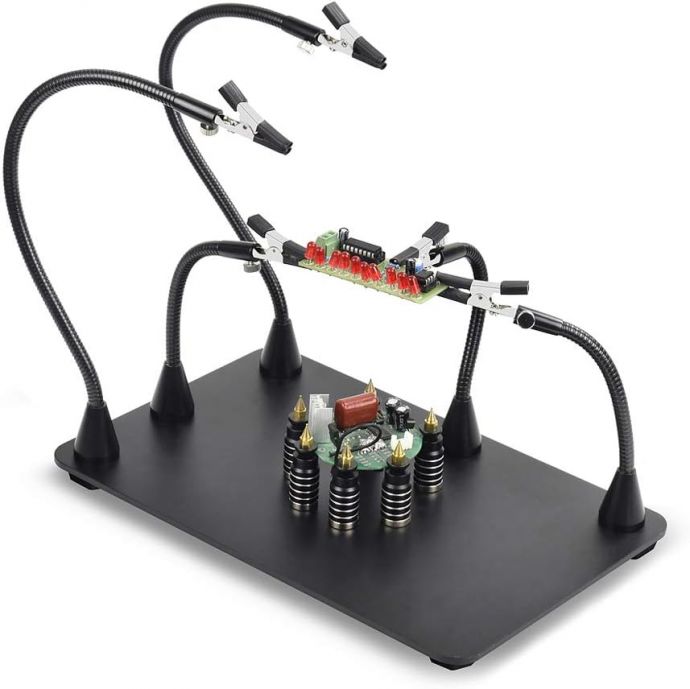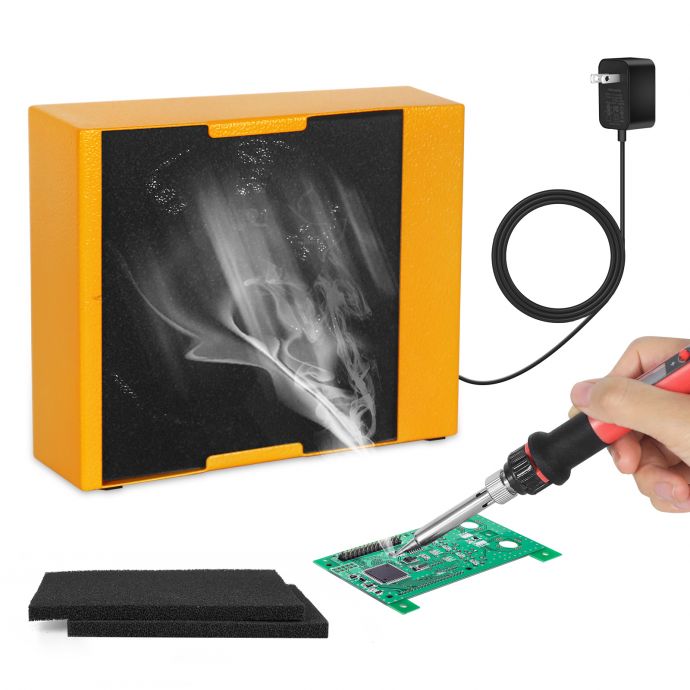In the world of DIY enthusiasts and hobbyists, a workshop is more than just a space; it’s a haven where ideas and innovations are born. Whether tinkering with electronics or crafting intricate jewelry, a common tool unites all craftsmen—the soldering iron. However, one must not overlook a significant byproduct of this otherwise productive process: solder fumes. These fumes, often laced with flux residues and other harmful particles, can pose serious inhalation hazards if not correctly managed. Enter the 12V solder fume extractor, a crucial yet often underestimated tool in maintaining a safe and enjoyable DIY environment.
Understanding the Risks

To appreciate the value of a solder fume extractor, it’s vital to understand the potential risks associated with inhaling solder fumes. These fumes often contain rosin, used in flux, which becomes volatile when heated. Inhalation can cause short-term irritation to the eyes, nose, and throat, and prolonged exposure can lead to more severe respiratory issues. For those frequently engaged in soldering activities, exposure to these fumes can be a stealthy health hazard that manifests over time, emphasizing the need for effective fume extraction solutions.
Why a 12V Solution?
The 12V fume extractor stands out due to its convenience and versatility. Unlike more cumbersome, stationary models, a 12V unit is typically compact and portable, powered by a common 12V DC adapter or even directly from a car battery in off-grid scenarios. This portability ensures that even those with limited space or the need to solder in various locations can maintain a fume-free environment. Moreover, the low voltage operation is synonymous with energy efficiency, making it a cost-effective option for home workshop integration.

Building Your DIY Solder Fume Extractor
Creating a solder fume extractor doesn’t have to be a daunting task. With a few tools, some basic components, and a little ingenuity, you can construct a highly effective system tailored to your needs.
**Components Needed:**

1. **Fan:** At the heart of your fume extractor is a 12V DC fan. Opt for one with a high airflow rate, ideally around 120mm, to effectively capture and redirect fumes away from your workspace.
2. **Power Supply:** A reliable 12V adapter that can provide sufficient current for your fan is essential. Alternatively, the unit can be powered by a battery with the appropriate capacity for flexibility and mobility.
3. **Hepa Filter or Activated Carbon Filter:** These filters are crucial in trapping both particulate matter and harmful gases. Activated carbon is known for its ability to absorb volatile organic compounds, making it an excellent choice for solder fume extraction.

4. **Housing:** This can be crafted from a variety of materials including plastic or wood. It’s important that the housing is sturdy enough to hold the fan securely and effectively direct the airflow through the filter.
5. **Switch:** A simple on/off toggle can be used to manage power to the fan, providing you with control over when the extractor is in use.
**Assembly Steps:**

1. **Fan and Housing Setup:** Begin by securing the fan within the housing unit, ensuring it is placed in a way to draw air through the filter. Use screws or adhesive as appropriate for stability.
2. **Filter Installation:** Attach the filter in front of the fan inlet. For activated carbon filters, ensure they are replaceable as their efficiency decreases over time.
3. **Wiring and Power:** Connect the fan to the power supply. Incorporate an on/off switch in the circuit to control power usage. Ensure all connections are secured with solder for permanence.

4. **Final Assembly:** Check for any air leaks to make sure all fumes are funneled through the filter, maximizing the extraction efficiency.
Enhancing Efficiency and Safety
Once your fume extractor is up and running, there are additional steps you can take to enhance its effectiveness and ensure a safer working environment.

**Regular Maintenance:** The effectiveness of your fume extractor largely depends on the condition of your filters. Regularly scheduled replacements of the activated carbon filters are necessary, as their absorption capacity diminishes over time. Similarly, ensuring that the fan blades and housing are clean from solder debris can prevent operational inefficiencies.
**Optimize Location:** Positioning your fume extractor appropriately can significantly impact its efficiency. It should be stationed as close to the soldering activity as possible, ensuring maximum fume capture before they disperse into the air.
**Incorporate Additional Ventilation:** Pair your fume extractor with additional room ventilation where possible. This can be as simple as a window fan to encourage fresh airflow, further diluting any residual fumes and providing a healthier work environment.
**Protective Gear:** While a fume extractor significantly reduces exposure, it is always advisable to use it in conjunction with personal protective gear such as respirators, especially during extensive soldering sessions.
Conclusion
In the pursuit of DIY mastery, prioritizing safety is as crucial as creativity. A 12V solder fume extractor not only safeguards your health but also enhances the overall workshop experience, allowing artisans to focus on their craft without the worry of inhalation hazards. Building your own extractor can be a rewarding project in itself, underscoring the resourcefulness and self-reliance that define the maker spirit. With a little effort, you can ensure that your workshop remains both a sanctuary of innovation and a bastion of safety, enabling you to continue creating with peace of mind.









